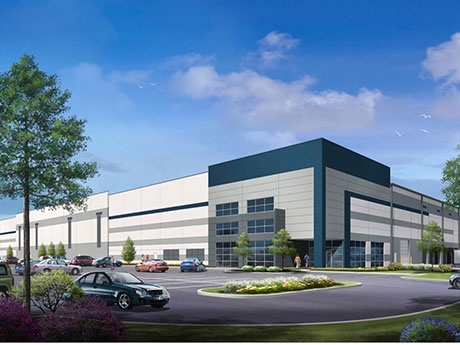By Mark Volkman and Brian Leonard, JLL
It’s no secret the industrial market has seen a monumental surge throughout the nation as a result of changing consumer behaviors.
How developers in each city are combatting the demand, though, is a different story.
The success of the industrial market in Cincinnati, in particular, stems from its affordable cost of living, strong labor pool and impressive accessibility. With the city being only an eight-hour drive away from half of the country, it’s become a viable option for tenants with a large footprint that want a lower-cost facility compared with the price of those in major cities like Chicago, New York City or San Francisco.
Like other cities throughout the U.S., Cincinnati’s successes have come with both challenges and a variety of emerging trends. Learn about some of the most prominent ones below.
1. The emergence of the Cincinnati-Dayton metroplex
With the heightened demand for industrial space comes the need for developers to find land not only in the city, but in its suburbs, as well.
Dayton, a city about one hour north of Cincinnati via Interstate 75, has surfaced as a strong option for developers. Proctor & Gamble’s 1.8 million-square-foot distribution center, completed in 2014, opened the doors for several new developments with the construction of Union Airpark Road and the implementation of essential utilities like water and sewers. In fact, the area has seen about 5 million square feet of new product over the past five years, with about five projects currently under construction and another five expected to deliver in 2023.
Dayton’s labor pool has also played a role in its recent industrial growth. Labor availability and lower wage rates are driving developers and tenants alike to the area.
2. Balancing supply, demand
As demand increases, so does the need for supply.
Speculative developments in Cincinnati have increased; however, 49 percent of the approximate 10.5 million square feet of projects under construction is already preleased, causing tenants to search for alternative options. Because they know they may have to wait just as long for speculative spaces, many tenants are either looking for spaces earlier or opting for build-to-suits so they can customize their own spaces.
Lack of supply in Cincinnati proper has also spurred growth in surrounding areas in Ohio such as Dayton, Turtle Creek Township, Springboro and Springfield, as well as surrounding areas in Kentucky, including Richwood and Walton.
3. Site constraint challenges
Not only has demand pushed developers to consider Cincinnati suburbs, but so has the city’s topography. The hilly landscape of Cincinnati and Northern Kentucky have bolstered site-constraint challenges, causing developers to search for alternative land options.
The lack of supply in Northern Kentucky, specifically, is causing the market to stretch into cities like Harrison, Ohio, located off I-74, or farther south into Walton, Kentucky. The flat topography of Dayton has also contributed to its continued growth.
It’s also becoming increasingly difficult for developers to find pre-1994 Community Reinvestment Area (CRA) tax-abated land, which offers the benefit of a 100 percent, 15-year tax abatement. While many developers have secured these sites, their availability is dwindling — another reason companies are seeking land in surrounding suburbs.
4. Continued construction
Despite site constraint issues, the city is still seeing a significant surge in construction, with developers eager to meet the growing demand. With 2 million square feet of construction breaking ground in the first quarter of 2022 alone, the market is seeing no signs of slowing down.
Of the 10.5 million square feet of projects currently under construction, notable developments include Amazon’s 2.5 million-square-foot air hub facility in the airport submarket and Nestle Purina’s 1.2 million-square-foot manufacturing facility being built in the east submarket. In addition, developers like Core 5, IDI Logistics and Panattoni are building speculative industrial projects.
5. Record-breaking vacancy, rental rates
The Cincinnati market is also experiencing record-low vacancy rates and record-high rental rates. Increased demand and lack of supply have driven vacancy to a historic city rate of 4.5 percent — a number that’s even lower in some specific areas. For example, the submarket around the airport is at 2.7 percent vacant, a number that’s expected to lower even more with leasing at Clarion Partners’ Runway Logistics Center and IDI Logistics’ Park South B.
Increased demand has also driven direct asking rents above $4.86 per square foot on average. Though rental rates have been up 15 to 20 percent in the past 24 months, companies are still eager to find spaces to accommodate the increasing e-commerce, grocery, manufacturing and other industrial product demand they’ve seen as a result of the COVID-19 pandemic.
A promising future
While land constraint issues in Cincinnati and Northern Kentucky will continue to be a challenge, the industrial market outlook is still positive, with no indication of slowed demand. As tenants scramble for space and developers search for suitable land, rental rates will likely rise to over $5 per square foot. In addition, the industrial market in nearby suburbs will continue to expand, especially as developers seek answers to their land constraint challenges.
Mark Volkman and Brian Leonard are managing directors with JLL. This article originally appeared in the July 2022 issue of Heartland Real Estate Business magazine.




